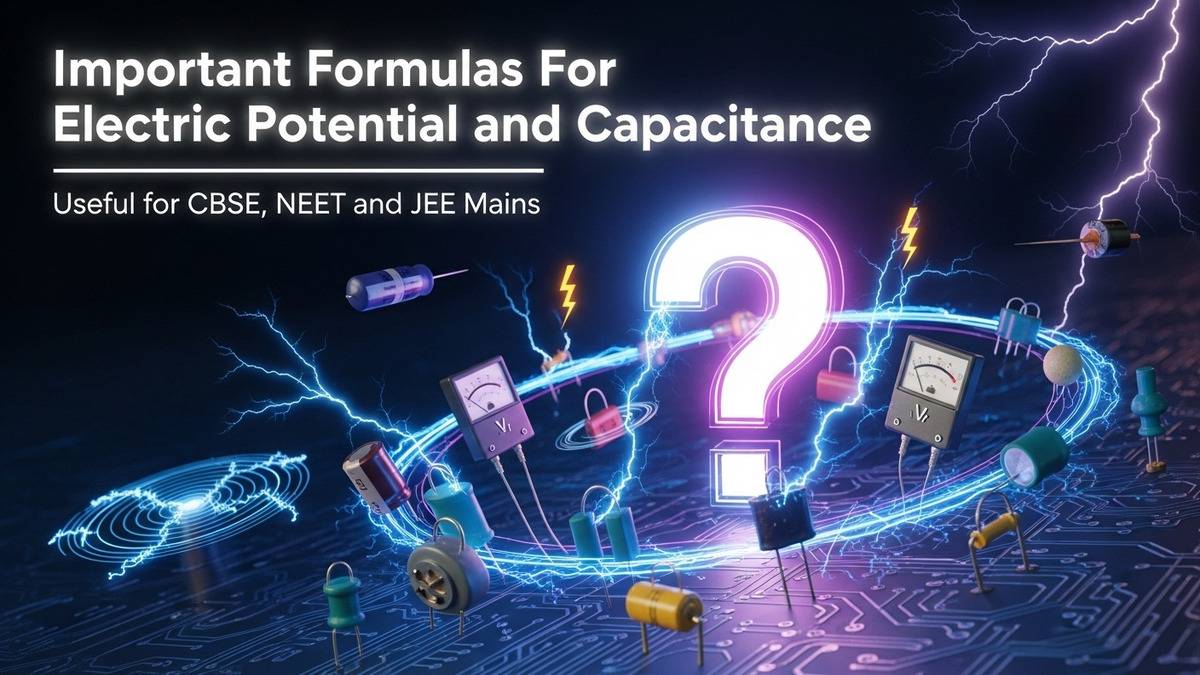Electrostatic Potential and Capacitance Formula Sheet PDF
You'll get compiled electric potential and capacitance formulas here. These formulas are very useful for quick revision in class 12 Boards and other exams. You can check important formulas for electrostatic potential and capacitance below.
Electrostatic Potential and Capacitance Formula Sheet: Our experts have created a concise and quick revision module of Class 12 Physics Chapter 2 all formulas. You can practice various complex problems of Electric Potential and Capacitance. You can combine these formulas with our chapter-wise NCERT Notes to get the best results. Check the Electrostatic potential and capacitance formula list below.
- Work Done By External Forces in Moving a Charge
- Electric Potential
- Electric Potential Energy
- Dielectric And Polarisation
- Capacitors And Capacitance
- Combination of Capacitors
- Energy Stored in a Capacitor
Work Done By External Forces in Moving a Charge
-
The work done is the product of displacement and external forces causing movement of a charge from point R to point P.
Electric Potential
The Work done by the external force brings a unit charge to Point A from infinity.
Potential Difference
= Potential Difference between A and B
Electric Potential Due to a Point Charge
Potential Due to a System of Charges
For a system of many charges.
Electric Potential Due to Electric Dipole
- At any point, making an angle with the dipole axis.
- On the Axial Line (θ = 0°)
- On the Equatorial Line (θ = 90°)
Equipotential Suface: Work Done
A surface where the potential at every point is equal and hence no work is required to move a charge in equipotenital surface.
WA - WB = 0
Relation Between Electric Field and Potential
Electric Potential Energy
Energy is stored in a system of charges due to the positions of the charges in an electric field.
Electric Potential Energy Due to a System of charges
Electric Potential Energy in External Electric Field
If a charge or a system of charges is placed in an external field:
- Potential energy of a single charge
- Potential energy of a system of two charges
- Potential energy of a dipole in an external field
| Related Study Material for Class 12 Physics Chapter 2 |
|---|
| Class 12 Physics Electrostatic Potential Notes |
| Class 12 Physics Chapter 2 Quick Revision Notes |
| Electrostatic Potential and Capacitance NCERT Solutions |
| Class 12 Physics Chapter 2 NCERT Exemplar Solutions |
Dielectric And Polarisation
Dielectrics do not conduct electricity, but they can be polarized when placed in an electric field.
- Polarisation:
Capacitors And Capacitance
A device used to store electric charge and energy in an electric field between two conducting plates. Capacitance is a measurement of charge stored per volt.
- Capacitance of a Parallel Plate Capacitor
- Capacitance of a Parallel Plate Capacitor with a Dielectric Slab (Thickness t)
Combination of Capacitors
- Capacitors in Series
- Capacitors in Parallel
Energy Stored in a Capacitor
- When Q and V are given:
- When C and V are given:
- When Q and C are given:

